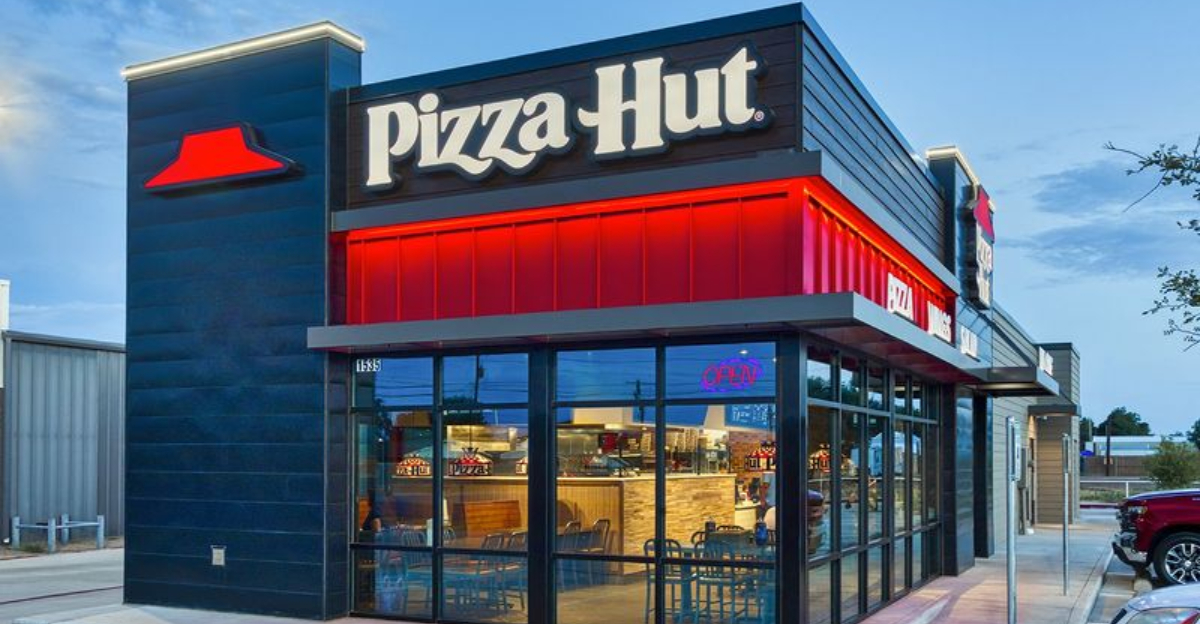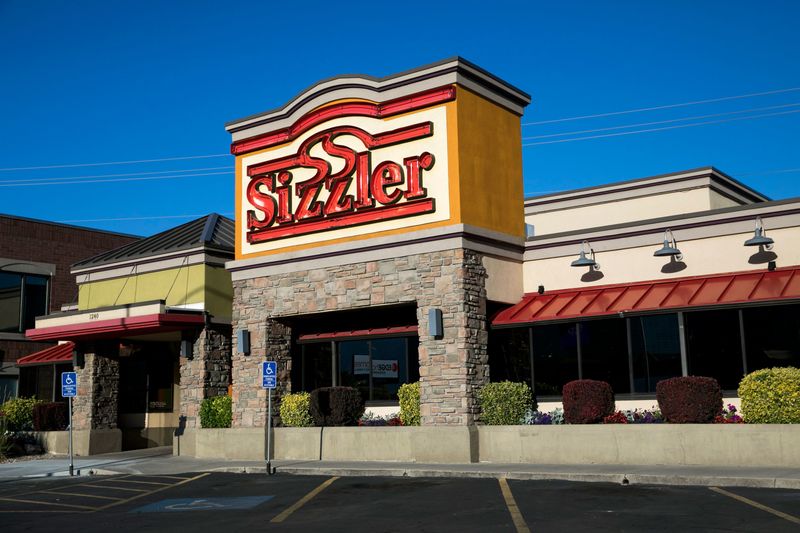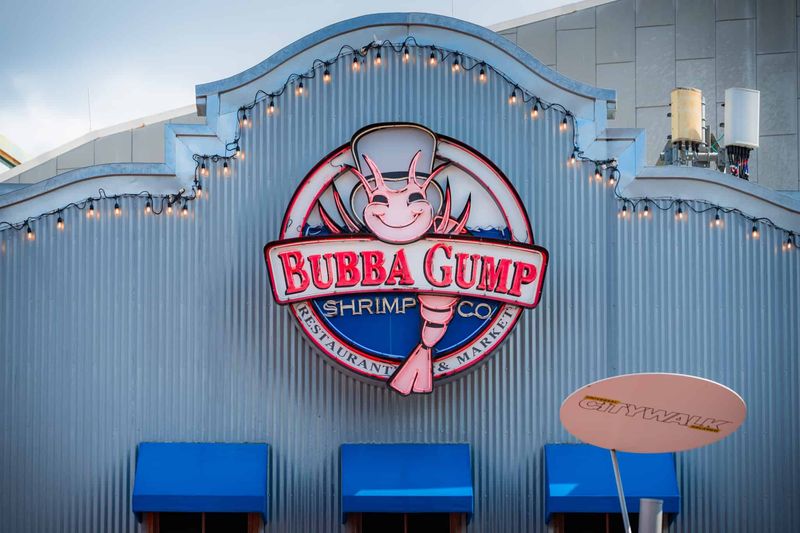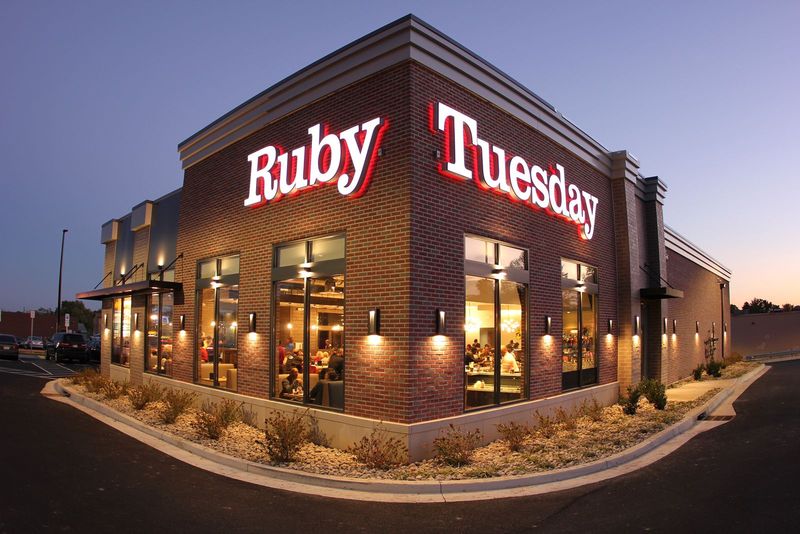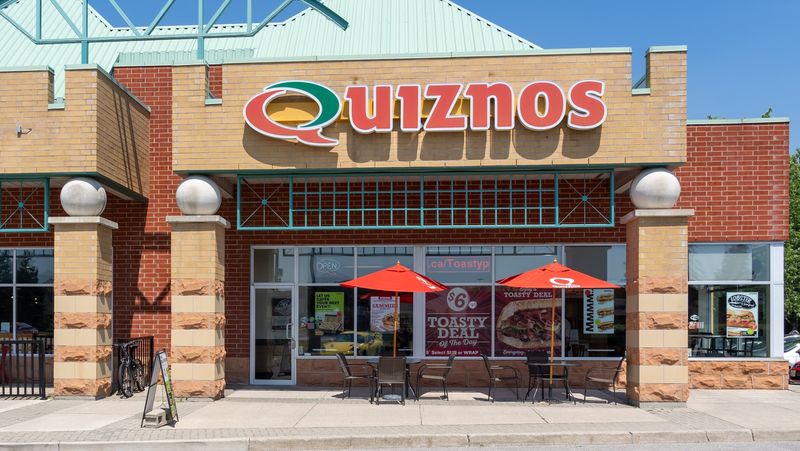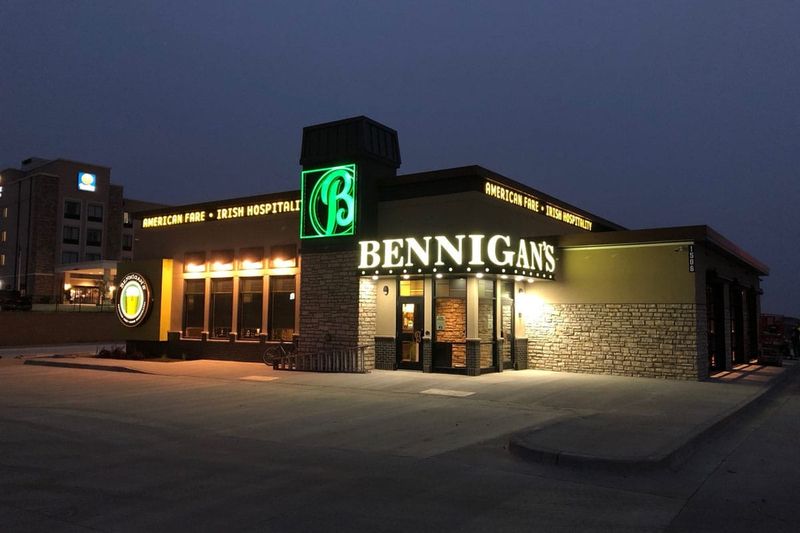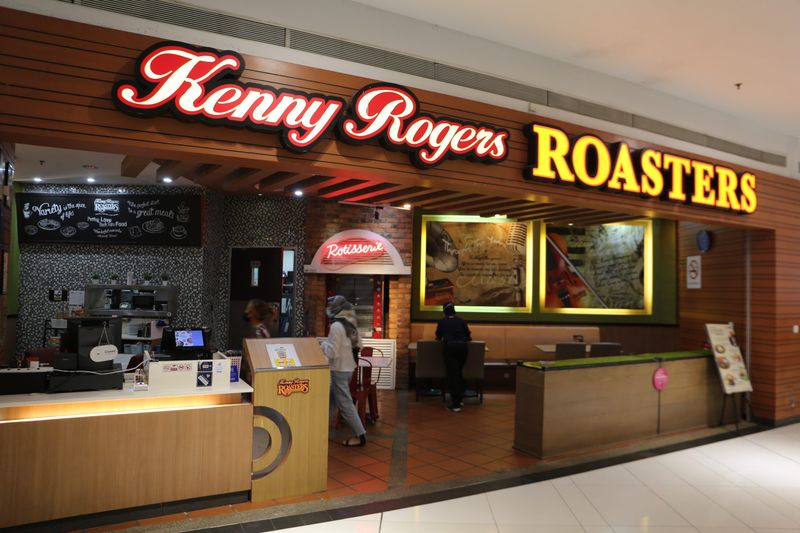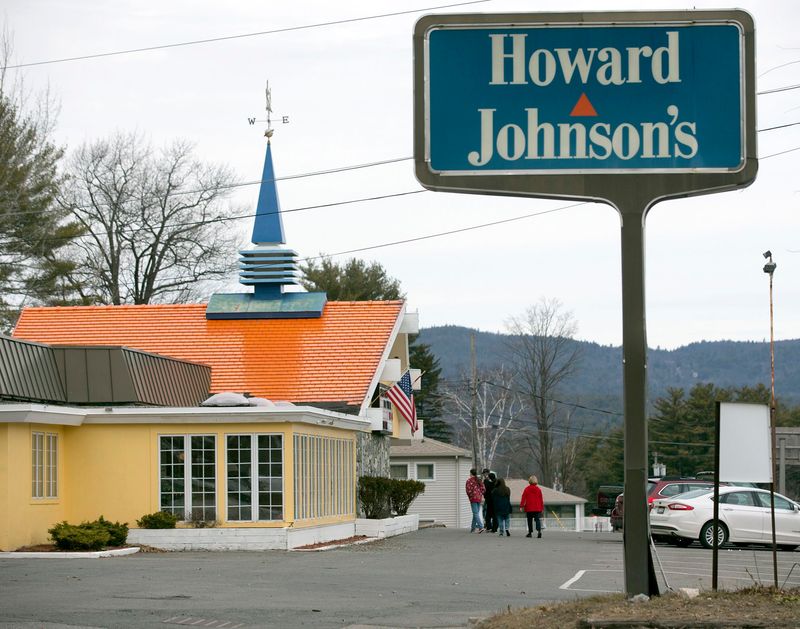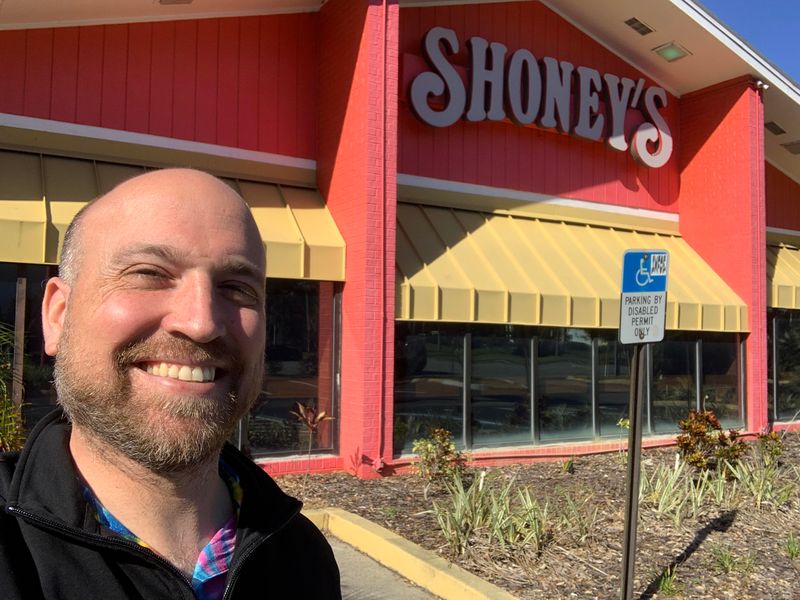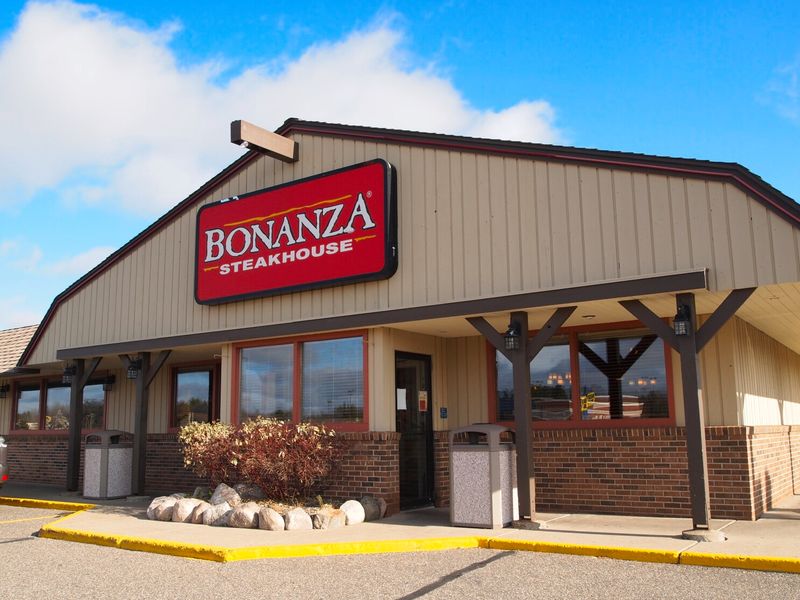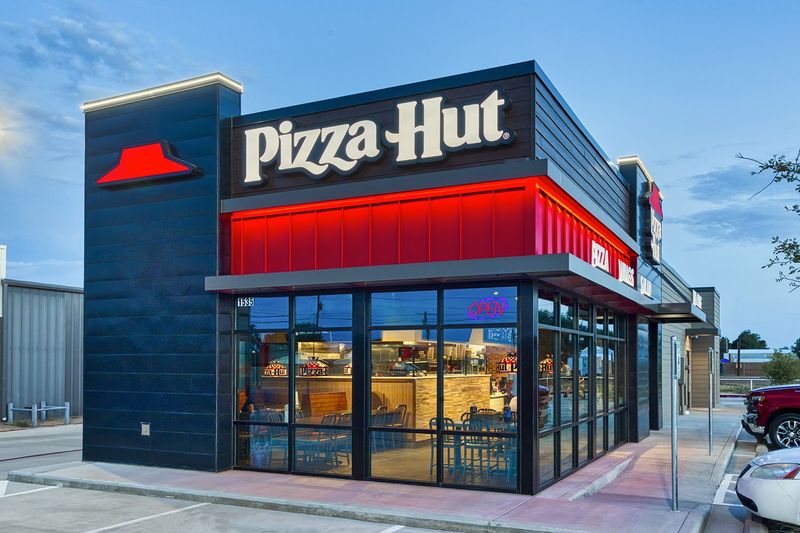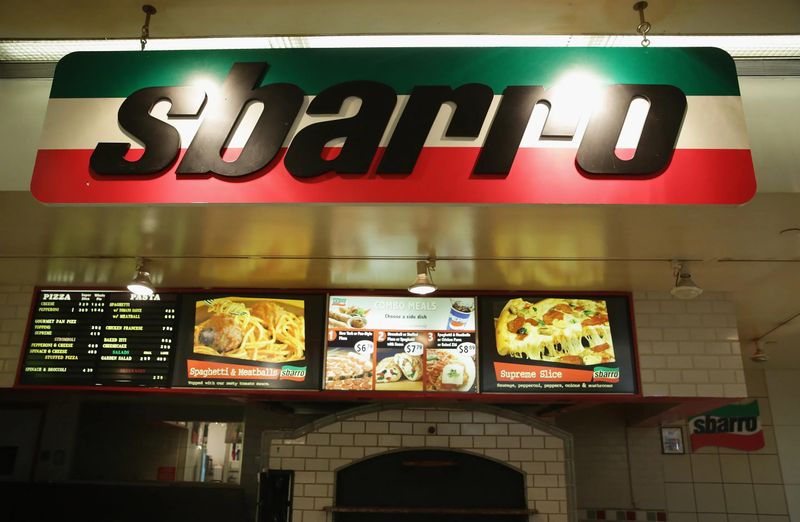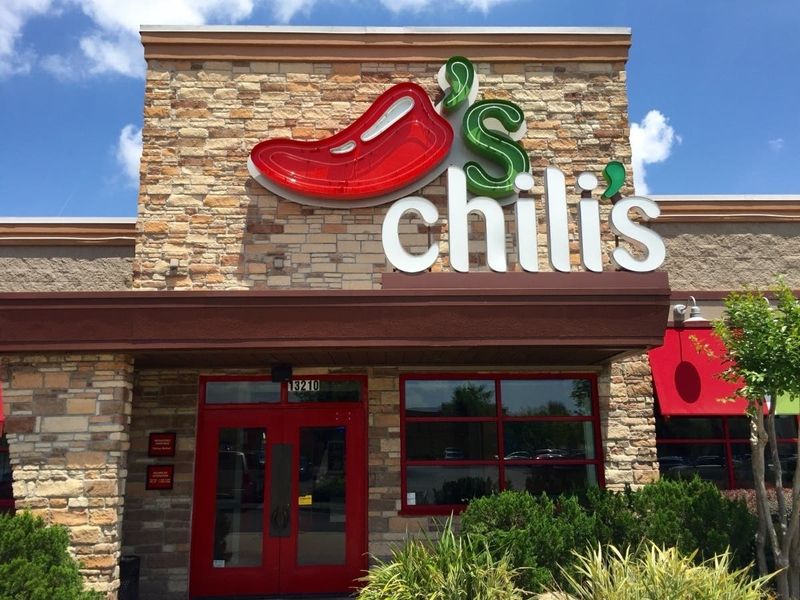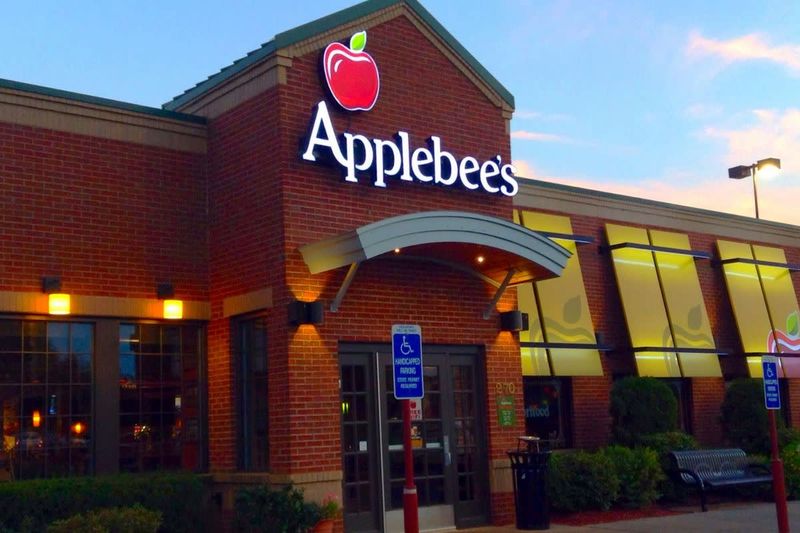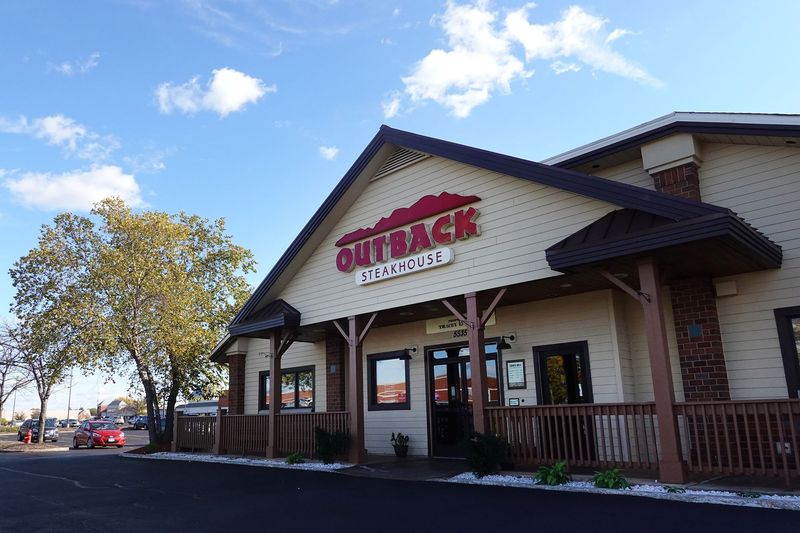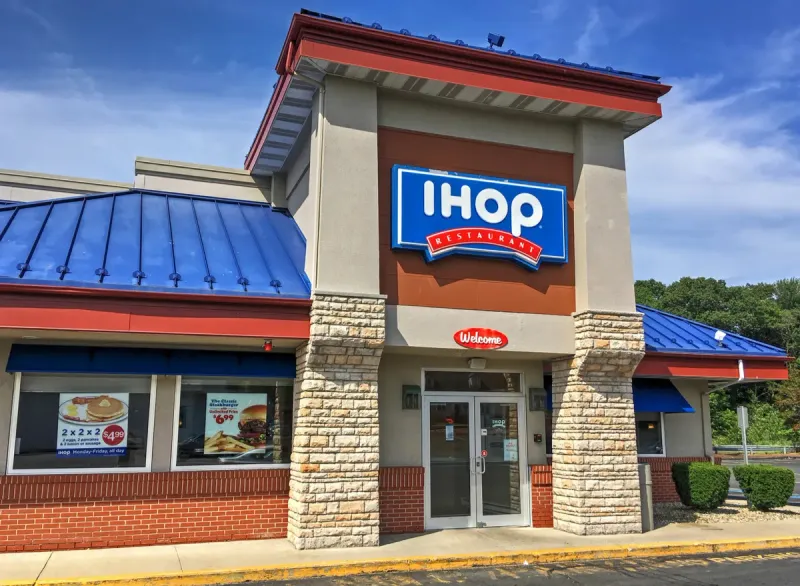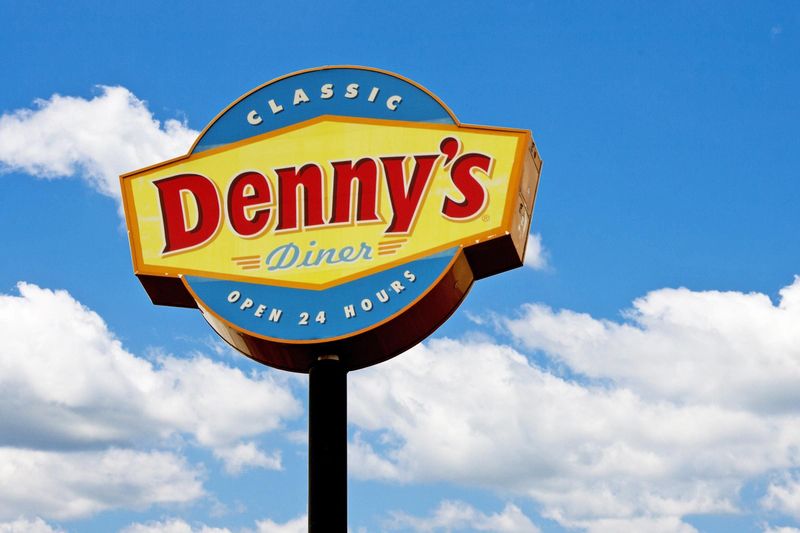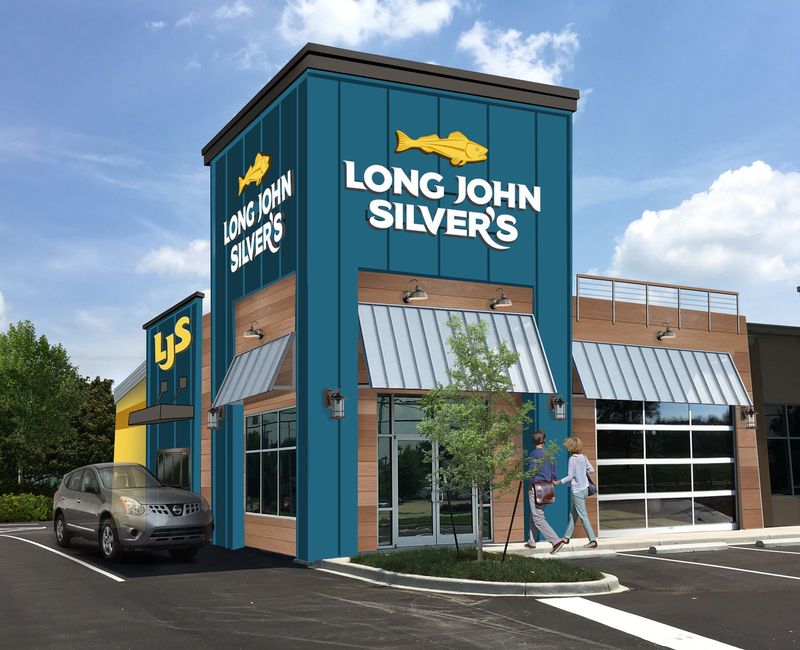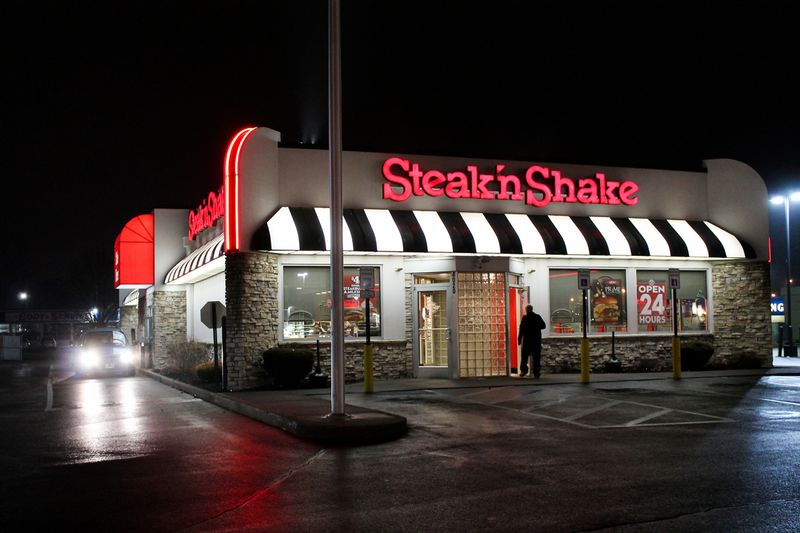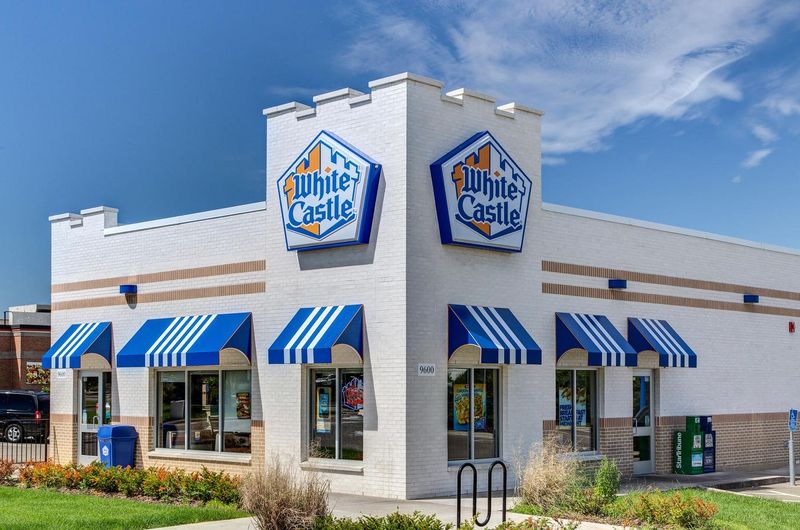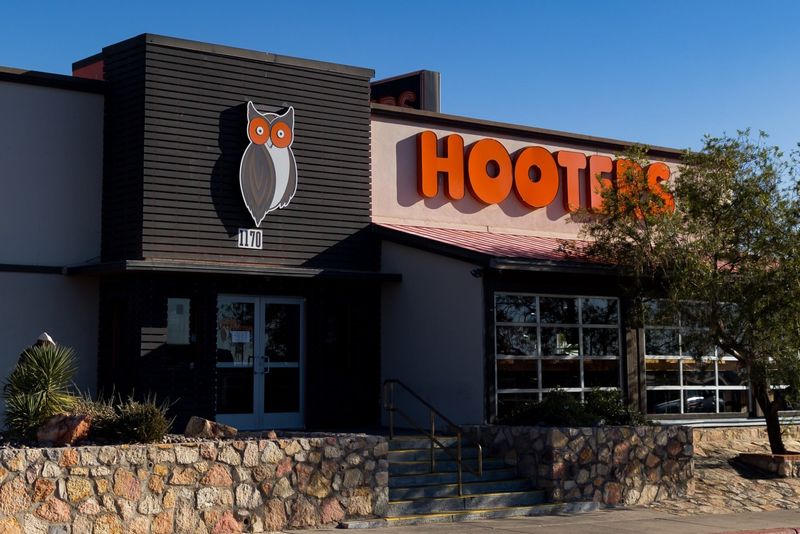Once beloved, these 20 restaurant chains have seen better days. Once darlings of the dining scene, they’ve now become shadows of their former selves.
Let’s explore these culinary giants that have lost their way.
1. Sizzler
Sizzler was once a bustling hub for families craving affordable steak and seafood. The iconic salad bar was its crown jewel, offering a variety of choices. However, over time, the allure faded.
Competition from fresher, trendier eateries took its toll. Many locations saw dwindling guests, leading to closures.
The ambiance, once vibrant, became stale and outdated. Attempts to revamp the brand never quite hit the mark.
Today, fewer Sizzlers remain, mostly remembered by those who cherished its past glory. Its decline is a testament to changing tastes and the ever-evolving restaurant industry.
2. Bubba Gump Shrimp Co.
Inspired by the movie Forrest Gump, Bubba Gump Shrimp Co. was once a novelty dining experience. The themed restaurant offered shrimp in every conceivable form.
Its quirky decor was a draw, but the novelty wore off. Over time, patrons sought more authentic seafood experiences.
Despite attempts to expand globally, many locations struggled financially. The focus on movie-themed dining felt outdated.
Today, Bubba Gump’s presence has diminished, a shadow of its former cinematic glory. It’s a reminder that even the most creative concepts need constant innovation to thrive.
3. Ruby Tuesday
Ruby Tuesday, known for its salad bar and casual dining, was once a staple in American suburbs. The restaurant promised a relaxed atmosphere with a menu to please all.
However, as consumer preferences shifted, Ruby Tuesday struggled to keep pace. The menu became uninspired, leading to a decline in customer visits.
Despite efforts to remodel and modernize, many locations closed. The brand’s former charm is now a distant memory. Today, Ruby Tuesday serves as a lesson in the importance of adapting to changing dining trends.
4. Quiznos
Quiznos was once a pioneer in the toasted sandwich market, offering a unique twist to the classic sub. Its flavorful offerings drew crowds.
But rapid expansion led to quality control issues. Franchisees faced high costs, driving many out of business.
As competitors like Subway adapted, Quiznos failed to innovate. The once-popular chain saw a steep decline in popularity.
Today, only a few locations remain, a testament to the perils of overexpansion without solid strategy. Quiznos’ story is a cautionary tale of growth without sustainability.
5. Bennigan’s
Bennigan’s was a leader in casual dining with an Irish twist. Known for its hearty menu and lively atmosphere, it was once a popular gathering spot.
However, financial mismanagement led to bankruptcy. This resulted in the closure of many locations.
Attempts to revive the brand have been met with mixed results. The spirit of Bennigan’s lingers nostalgically in the minds of former patrons. Its decline highlights the importance of financial prudence in the restaurant industry.
6. Kenny Rogers Roasters
Kenny Rogers Roasters offered a unique dining experience with its focus on roasted chicken. The chain, backed by the famous country singer, became a hit in the 1990s.
However, fierce competition from similar establishments led to a decline. The brand failed to maintain its initial momentum.
Financial struggles forced many locations to close. Though international locations still operate, the brand’s presence in the U.S. is virtually non-existent. Kenny Rogers Roasters is a reminder that celebrity endorsements don’t guarantee lasting success.
7. Howard Johnson’s
Howard Johnson’s was once synonymous with American road trips, offering reliable meals and accommodations. Its orange roofs became iconic landmarks.
As the years passed, competition from modern hotels and eateries grew. The brand struggled to evolve with the times.
Most locations have since closed, leaving behind memories of a bygone era. Howard Johnson’s decline is a poignant example of how even the most iconic brands must innovate to survive.
8. Shoney’s
Shoney’s was once a beloved family dining destination, known for its breakfast buffet and friendly service. Its warm atmosphere attracted diners across generations.
However, shifts in dining preferences and increased competition led to its decline. Efforts to modernize were met with limited success.
Many locations shuttered as a result, leaving a few scattered across the country. Shoney’s serves as a reminder of the challenges faced by family-oriented chains in a rapidly changing market.
9. Bonanza Steakhouse
Bonanza Steakhouse offered a Western-themed dining experience complete with hearty steak meals and a broad buffet selection. It was a hit in its heyday.
However, as dining trends evolved, Bonanza struggled to keep its offerings fresh and appealing. Many locations found it hard to compete with more contemporary dining options.
Despite efforts to rebrand, the chain couldn’t recapture its former glory. Today, Bonanza’s once-bright star has dimmed significantly. Its story underscores the need for continuous innovation in the restaurant industry.
10. Pizza Hut
Pizza Hut was once the go-to spot for family pizza nights, known for its iconic red-roofed buildings and dine-in experience. The restaurant was a staple in many communities.
However, the shift toward delivery and take-out, coupled with intense competition, led to closures. The dine-in model became less viable.
Pizza Hut has since pivoted its focus to delivery, but many of its classic dine-in locations have closed. Its journey reflects the need for adaptability in the face of changing consumer habits.
11. Sbarro
Sbarro was a staple in mall food courts, offering quick and convenient Italian fare. Its pizza slices were iconic among shoppers needing a quick bite.
Yet, as mall traffic declined, so did Sbarro’s fortunes. The brand struggled to attract a new generation of diners seeking diverse and healthier options.
Despite restructuring efforts, many locations closed. Sbarro’s story highlights the impact of broader retail trends on food outlets.
12. Chili’s
Chili’s, once a popular casual dining option, was known for its Southwestern-inspired menu and lively atmosphere. The brand was synonymous with family outings and celebrations.
However, changing dining preferences and increased competition left Chili’s struggling. Efforts to revitalize the menu and ambiance have had limited success.
Though many locations remain, the brand has seen better days. Chili’s tale underscores the importance of innovation in maintaining relevance.
13. Applebee’s
Applebee’s, a once-popular neighborhood grill, was favored for its casual dining and extensive menu. It offered something for everyone, making it a family favorite.
Nevertheless, as new dining trends emerged, Applebee’s struggled to adapt. The brand faced criticism for lackluster menus and uninspired ambiance.
Despite rebranding attempts, many locations closed, leaving fewer outposts. Applebee’s decline illustrates the challenges of staying current in a dynamic industry.
14. Outback Steakhouse
Outback Steakhouse brought a taste of Australia to the U.S., gaining fans for its Bloomin’ Onion. The steakhouse was once a go-to for hearty meals.
Yet, as preferences shifted towards more authentic and healthier options, Outback struggled. The brand’s identity felt increasingly outdated.
Despite efforts to revamp its image, many locations saw dwindling customers. Outback’s experience highlights the challenge of maintaining novelty and appeal.
15. IHOP
IHOP, famed for its pancakes, was a breakfast staple for many families. Its cheerful blue roof was a beacon for hungry diners.
However, increased competition from all-day breakfast offerings elsewhere led to a decline. The brand’s attempts to stay relevant met with mixed success.
Though still beloved by some, fewer IHOPs operate today. Its story emphasizes the importance of continuous adaptation in the dining industry.
16. Denny’s
Denny’s is a classic American diner known for its 24/7 service and diverse menu. It was a favorite for late-night meals and family breakfasts.
Nonetheless, as dining trends shifted, Denny’s found itself struggling to keep up. Efforts to modernize and attract a younger crowd were slow.
While many locations persist, the brand’s appeal has waned. Denny’s journey is a study in the necessity of evolving with consumer tastes.
17. Long John Silver’s
Long John Silver’s was once a favorite for fast-food seafood lovers, offering a unique pirate-themed dining experience. The chain was known for its fried fish and hush puppies.
Yet, as healthier options gained popularity, the chain’s greasy menu lost its charm. Many locations saw declining customers.
Despite efforts to introduce healthier options, the brand struggled. Long John Silver’s exemplifies the challenges faced by niche chains in a health-conscious market.
18. Steak ‘n Shake
Steak ‘n Shake was a staple for burger and milkshake enthusiasts, with a classic diner vibe. It was a go-to for families and late-night diners.
However, operational challenges and changing consumer preferences led to a downturn. Many locations closed amidst financial struggles.
While attempts to revitalize the brand continue, its former prominence has diminished. Steak ‘n Shake’s tale is a reminder of the impact of operational efficiency on success.
19. White Castle
White Castle, famous for its small sliders, was a pioneer in the fast-food industry. Its unique architecture was iconic.
However, as fast-food giants emerged, White Castle struggled to maintain its footing. The brand’s limited menu and regional presence were hurdles.
While still cherished by fans, its widespread popularity has faded. White Castle illustrates the challenges of competing with larger, more diverse chains.
20. Hooters
Hooters was famous for its casual dining and sports bar vibe, attracting patrons with its unique service style. The brand was known for its wings and lively atmosphere.
However, societal shifts and changing dining norms led to declining interest. Many locations closed as a result.
Despite attempts to update its image, Hooters has struggled to regain its former popularity. Its experience highlights the need for brands to evolve with cultural trends.
